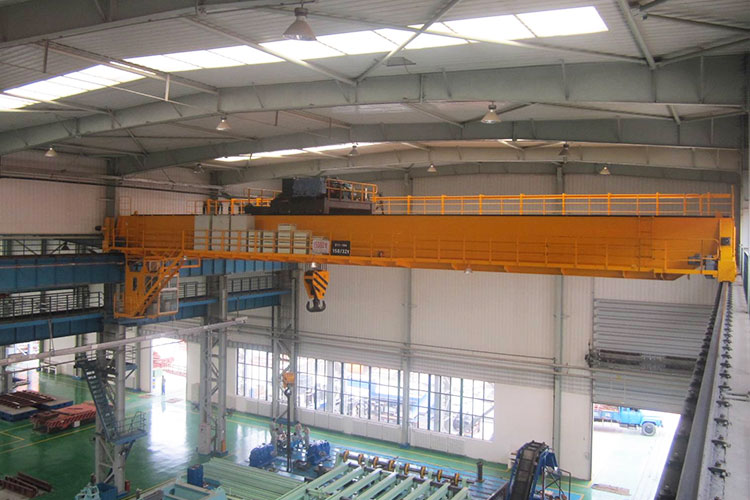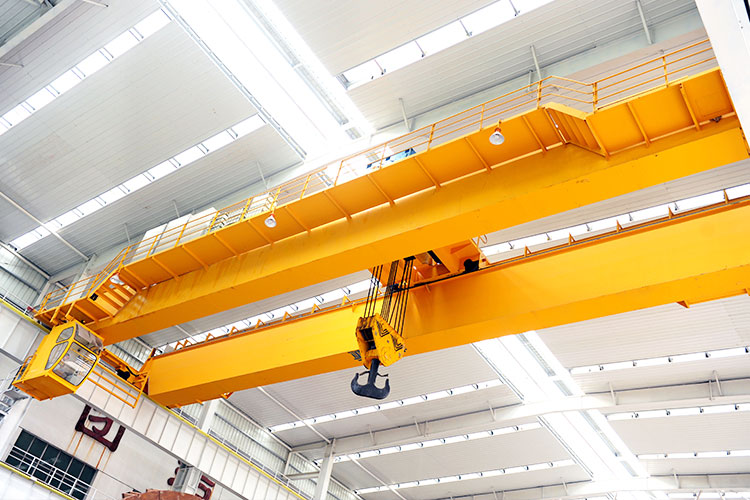Maintaining load stability during 100-ton overhead crane operations is one of the most critical aspects of ensuring safety, performance, and efficiency in heavy lifting environments. When handling massive loads – such as steel structures, machinery components, or large precast concrete elements – even a small imbalance can result in dangerous swinging, load shifting, or even structural damage. Understanding how to maintain stability through proper crane configuration, load control, and operator awareness is essential for any facility using high-capacity overhead cranes.

Understanding Load Stability in Overhead Crane Operations
Load stability refers to the ability to keep a lifted object balanced and stationary during all stages of crane operation, from lifting and traveling to lowering. In 100 ton overhead cranes, the weight of the load amplifies the potential impact of instability – any movement, misalignment, or sway can cause significant mechanical stress on the crane structure and endanger workers.
Several factors influence load stability:
-
Load shape and center of gravity: Irregularly shaped or asymmetrical loads are more likely to shift during lifting.
-
Slinging and rigging configuration: The way slings and hooks are attached affects the load’s balance.
-
Crane motion and speed: Sudden starts, stops, or directional changes can induce pendulum motion.
-
Environmental conditions: Wind, vibrations, or uneven flooring can all compromise stability.
A comprehensive maintenance and operational approach must address all these variables to ensure safe and steady crane performance.
Pre-Lift Planning: The Foundation of Load Stability
Before operating a 100-ton double girder overhead crane, thorough pre-lift planning is essential. This stage includes evaluating the load, the lifting equipment, and the work environment to prevent instability from the outset.
-
Assess Load Characteristics
Determine the exact weight, dimensions, and center of gravity of the load. For unevenly distributed loads, the lifting point must be adjusted so that the crane hook aligns vertically with the load’s center of gravity. -
Select the Right Rigging Equipment
Use slings, shackles, and spreader beams rated well above 100 tons to ensure safety margins. The rigging configuration – such as single-point, double-point, or four-point lifting – should match the load’s geometry and balance requirements. -
Check the Crane Configuration
Inspect the crane’s hoisting mechanism, wire ropes, hooks, and trolley system. Confirm that the crane’s rated capacity, span, and lifting height are appropriate for the operation. -
Plan the Lifting Path
Identify potential obstacles or obstructions along the crane’s movement path. Smooth and clear travel routes help prevent sudden directional changes that could destabilize the load. -
Conduct a Pre-Lift Meeting
Before the actual operation, ensure all personnel involved understand the lifting plan, communication signals, and safety responsibilities. Coordination is key to avoiding abrupt movements and miscommunication during operation.

Proper Lifting Techniques to Prevent Sway and Instability
The way a load is lifted has a direct effect on its stability. A controlled and gradual lifting process minimizes pendulum effects and ensures even stress distribution across the lifting system.
-
Lift Vertically: Always ensure the hook is positioned directly above the load’s center of gravity. Lifting at an angle can cause side loading, which may lead to rope damage or load tipping.
-
Apply Slow and Smooth Motions: Start the lift gradually to avoid jerking motions. Use the crane’s variable speed controls to accelerate and decelerate smoothly.
-
Avoid Sudden Stops: Rapid braking or abrupt trolley movement can cause the load to swing dangerously.
-
Maintain Constant Communication: The operator and signal person must stay in contact throughout the operation, especially during complex maneuvers.
-
Use Anti-Sway Controls: Many modern 100-ton overhead cranes are equipped with electronic anti-sway systems that automatically adjust the heavy industrial overhead crane motion to minimize swinging. Utilizing these features significantly enhances load stability.
In-Transit Stability: Safe Traveling with Heavy Loads
When moving a 100-ton load across the workshop, maintaining balance and control is equally critical.
-
Keep the Load Low
Traveling with the load as close to the ground as possible reduces potential energy and minimizes the effects of swinging. -
Align Movement Directions
When possible, move the crane bridge, trolley, and hoist along straight, aligned paths. Avoid diagonal movements that can create unpredictable swinging. -
Monitor Load Swing
If the load begins to swing, stop movement and allow it to stabilize before resuming. Attempting to “counteract” the swing by moving in the opposite direction can worsen instability. -
Control Speed
Adjust crane speed to suit the load’s size and the work environment. In congested areas or near personnel, move at minimal speed to ensure safety. -
Account for Environmental Factors
Airflow, temperature changes, and vibration from nearby machinery can influence stability. Operators should compensate by maintaining slower, steadier motion in such conditions.
Lowering the Load Safely
The final stage – lowering the load – is often underestimated, but it carries just as much risk as lifting.
-
Ensure Proper Ground Contact: Before fully releasing tension, make sure the load is stable and evenly supported on the ground or platform.
-
Avoid Sudden Release: Lower the load gradually to prevent sudden impact, which could destabilize both the load and the eot crane system.
-
Check Alignment: Ensure that the load lands exactly in the intended position to avoid shifting or tilting.
-
Inspect Rigging Before Removal: Once the load is on the ground, confirm that slings and hooks are free of tension before disconnecting them.
Operator Training and Safety Awareness
Even with advanced technology, human skill remains central to maintaining load stability. Well-trained crane operators understand the physics of lifting, recognize early signs of instability, and respond appropriately.
Operator training should include:
-
Understanding load charts and capacity limits.
-
Practical experience with different load types and rigging methods.
-
Emergency response procedures for unstable or swinging loads.
-
Familiarity with anti-sway systems and load-monitoring equipment.
-
Continuous safety drills to reinforce communication and coordination.
Refresher courses and hands-on practice should be mandatory for operators handling 100-ton cranes due to the immense risks associated with these loads.
Maintenance and Equipment Checks for Stability
Equipment maintenance plays a vital role in ensuring stable operations. A worn-out or improperly maintained crane can lead to uneven lifting or mechanical failure.
Routine maintenance should include:
-
Wire Rope and Hook Inspection: Look for fraying, corrosion, or deformation that could affect load alignment.
-
Trolley and Bridge Rail Checks: Ensure rails are clean and level to prevent jerky movement.
-
Control System Calibration: Regularly test and calibrate anti-sway systems, load sensors, and limit switches.
-
Lubrication and Alignment: Keep all moving parts properly lubricated and aligned for smooth motion.
-
Periodic Load Testing: Conduct controlled load tests to verify crane performance under maximum rated conditions.
Conclusion
Maintaining load stability during 100-ton overhead crane operations is a multi-faceted process that integrates technical precision, operator expertise, and systematic maintenance. From careful pre-lift planning to smooth motion control and thorough post-operation checks, every step contributes to safer and more reliable lifting performance.
By emphasizing balanced load handling, precise crane control, and preventive maintenance, operators and facility managers can not only prevent accidents but also extend the service life of their cranes and rigging systems. In high-capacity lifting environments, stability isn’t just a safety requirement—it’s the foundation of operational excellence.
